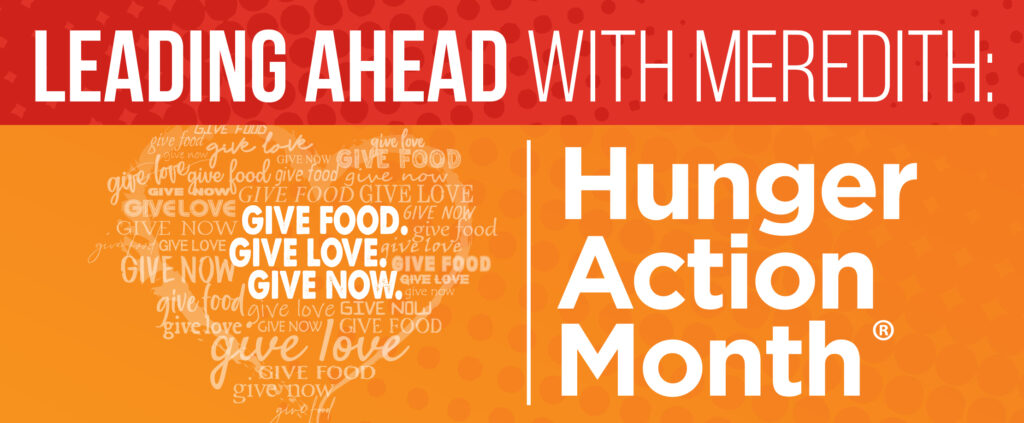School Markets are the newest program at the St. Louis Area Foodbank.
These school-based pantries allow the Foodbank to serve children and their families more efficiently. The following is an interview with Molly Brown, our Youth Programs Coordinator, about how the school markets came to be and what she’s looking forward to with the School Market program.

How long did it take to get the school market program up and running?
In August of 2019, I was hired to set up the school market program. First, we identified physical spaces within the school where the markets would be set up. After a space was identified, the refrigerator, freezer, and shelving were ordered, which take about 6 to 8 weeks to arrive. For every market, we’d have a “set up day,” where the school got the initial large drop of food, and staff and volunteers set up the market to make it look like a grocery store.
What kind of food is found in the school markets?
The school markets have perishable product, such as fresh fruits and vegetables, refrigerated products (i.e. eggs, dairy, and cheese) and frozen products (i.e. ground turkey/ground beef, frozen fruit, frozen chicken strips, etc.) as well as shelf-stable products like spaghetti, peanut butter, canned fruits and vegetables, fig bars, and mac and cheese.
Have you heard any feedback from teachers or school administrators about the impact this might have on their students?
Principals, teachers, and superintendents are always amazed at the quality of the food we are able to offer (both perishable and non-perishable) and how much the market looks like a true grocery store. They’ve told me that this helps their families have food for weekends and breaks from schools. They’ve also said this food helps their students focus in school, decreases visits to the nurse’s office due to hunger, and increases attendance. Students are better able to concentrate in class because they are not distracted by hunger in their morning classes. If there are kids that haven’t eaten breakfast, the school now has a market full of food, including snack pack boxes, to pull from to help students get through the day.
Have you heard from any students about what this means for them and their school?
I have heard from students both receiving food and helping distribute food. Students and families receiving food are excited that they get to choose what food they take from the market, and they enjoy having access to food they might not be able to afford at a grocery store, such as fresh produce, frozen chicken nuggets, milk and eggs. They are very grateful for the assistance the markets are able to provide for them.
Students helping distribute food are excited that the school market program helps showcase their hard work. Students that help at the markets do everything from receiving deliveries to stocking shelves and helping run the markets during open hours.
What would you love to see for the future of these markets?
I’m excited to be able to provide more diverse types of fresh fruits and vegetables as the program expands. Right now, we are focused on produce that has a longer shelf life, but as we are turning product over faster, we can provide more types of fresh produce and know that we have enough schools to send it to that will be able to send the fresh food home with families before it goes bad.
I would also love to have a monthly cooking demonstration or nutrition education session of some kind at each school market. I’m happy that we’re providing access to fresh and healthier foods, but I also want to engage students and families in other ways.
Read more about the School Market program on the Foodbank’s website.

